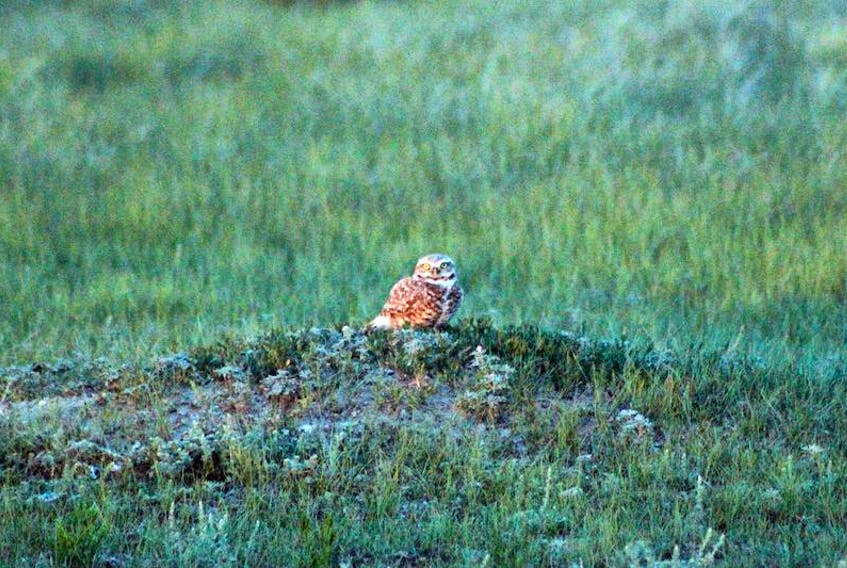They told me I wouldn’t see one. The sun was fast setting over the rolling hills and prairie vistas of Grasslands National Park, Sask., and I’d already failed to spot one earlier that day. But given this park’s openness, where great distances and colossal skies are always within view, I was overcome with the possibilities inherent to this place. It was worth a try.
The burrowing owl is an adorable creature, hunting rodents and insects like any of its hooting brethren, but when it comes to nesting, this particular avian raises its young in the abandoned burrows of prairie dogs, another species-at-risk taking refuge in Grasslands National Park.
There are a great many factors at play in the decline of this owl. Given its seasonal migration from wintering grounds in the southern U.S., to nesting grounds across the continent, a great many things can go wrong, from the loss of food security, to the destruction or disturbance of habitat. Their Canadian population in 2004 was estimated at 795 mature adults, a number which is believed to have fallen in recent years to a mere 270.
They no longer occur in Manitoba, holding their ground in parts of Alberta and Saskatchewan alone, their greatest Canadian concentration huddled within this very park.
One must tread lightly in pursuit of these owls. Their preference for prairie dog colonies means these wonderful rodents bark at your every step, alerting the world to your presence and warding you away from their particular mounds. Tormenting any of this park’s animals with your excessive presence is very much against the rules, so we could not linger. The light was failing fast and the Parks Canada staffer escorting me was shaking her head. There would be no sightings this night; I could see it in her face.
Protecting the habitat of this endangered owl is only a part of Parks Canada’s conservation effort. They undergo extensive monitoring of the dozen or so nests within their borders, and have been supplementing the diets of these beleaguered burrows so more juveniles survive annually. Nests unsupported in this fashion produce three to four juveniles a year, while those supplied with frozen mice produce six to nine. Staff tell me they hope to harbour 40 nests or more someday, closer to historic numbers.
We had overstayed our welcome with these prairie dogs and the lighting was poor even for the best equipped photographers. The landscape for kilometres was bathed in deep red light and our shadows seemed to reach distant mountains. The time had come to turn back.
It’s difficult to be sure of any sound in Grasslands National Park. When the wind is low, I’m certain no place on Earth is as quiet, except the wind is frequent, strong and often carries strange noises to your gullible ears. Just as we’d given up on seeing a burrowed owl, I heard its call on the breeze. I stopped and listened, hearing it again and this time louder. I watched it soar overhead, perching on a prairie dog mount behind me, fully illuminated by the light of dusk.
I manoeuvred myself carefully into position, trying to steady my camera with trembling hands and adjust my settings for unfavourable dimness. I must have taken 30 photos, and only for one did the stars align. I have taken better pictures in my time, but never of something so difficult to find. My heart goes out to the burrowing owl, and to those at Parks Canada trying to save it.
Zack Metcalfe is a freelance conservation journalist, author and writer based in the Maritimes.









